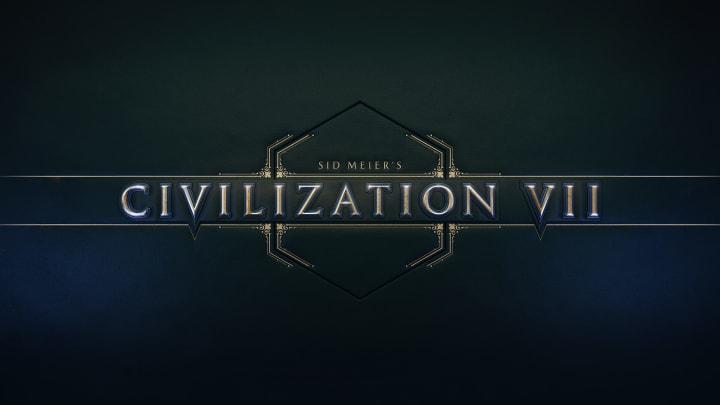Female leaders we’d like to see in Civilization 7

The Civilization 7 announcement has essentially set off the countdown towards launch, even if we have no idea at this point what the game will be like. With several big contenders coming in and bringing their own takes on turn-based 4X strategy games, it will be interesting to see what Firaxis will do: Will it pick up new trends like including production chains or stay true to its ways?
Whatever it will be, the fact that civilizations come with different leaders to choose from will – hopefully – not be changed. After looking at leaders we’d like to see in Civilization 7 to spice up the usual playstyles of some iconic nations, it’s time to indulge in yet more fun speculation.
Firaxis has been making a conscious effort to bring more ruling women into the game with Civ 6, which gave us a few very interesting personalities and playstyles, so this time we want to do the same – here are some female leaders we’d like to see in Civilization 7.
Sobekneferu – Egypt
- Focus on food and production
We’ve had iconic Egyptian queens like Hatshepsut and Cleopatra in Civilization in the past. Sobekneferu’s fame pales in comparison to them, despite being the first woman to assume rulership in Egypt in her own name and with the full pharaonic titles. It’s easily explained why she’s famous despite that feat – the entire era is poorly documented, so much of her rule is frankly up to guesswork.
Like most Pharaohs, Sobekneferu built monuments and a tomb, giving us that typical Egyptian production focus. She’s also the first Egyptian ruler to be directly associated with the crocodile god Sobek, which in turn is closely connected to the Nile – as such, her bonuses could be focused on growth and food production as well.
Himiko – Japan
- Focus on religion and diplomacy
The exact details of Himiko’s rule are debated, but ancient Chinese sources mention her as a queen engaged in sorcery and magic who united a large territory in Japan under her rule after some upheaval. She apparently kept strict control over her subjects and was hardly ever seen, living in a highly protected palace.
Being associated with shamanism, Himiko could bring a unique religious playstyle for Japan to the table. Her second focus could either be diplomacy – she apparently stayed closely in touch with China and there is a source speaking of diplomatic contact with Korea – or military to reflect her tight control over her realm.
Zaynab Al-Nafzawiyya – Berbers
- Focus on gold and diplomacy
Zaynab Al-Nafzawiyya is recognized in Muslim sources as the co-ruler of the Almoravids, which would cement their rule in the Maghreb during her lifetime. Zaynab grew very rich due to her first marriages, making herself an attractive option for the region’s most powerful men – and she had the ambition to boot, apparently refusing any man who didn’t want to become a ruler.
Her vast wealth lends itself to a focus on earning gold. Her second focus should certainly be the diplomatic angle: The sources nickname her “The Magician” for her immense negotiation skills, crediting her with greatly contributing to the expansion of the realm and preventing a civil war between rival leaders (a former and current husband of hers).
Zenobia – Syria
- Focus on military and science
Zenobia was a Roman client ruler who exploited the empire’s instability in the third century to form a large breakaway state centered on the Syrian city of Palmyra. Zenobia came to power after her husband and his heir had been assassinated and ruled for her youngest son, taking over vast parts of the Roman Empire in the east before Aurelian restored order.
Her bold campaigns against Rome have definitely earned her a military angle, perhaps with a bonus against states with a lot of unrest. Zenobia also made Palmyra a center of learning, so that’s where the science bonus comes into play.
Mawiyya – Arabia
- Focus on military and religion
Mawiyya is another eastern queen who clashed with the late Roman Empire. Leading a revolt against Rome with immense success, Mawiyya was able to dictate the peace terms and then become a trusted ally of the empire.
She personally led her warriors on campaign with much success and bravery. One of the peace terms Mawiyya dictated to Rome was the appointment of an Arab bishop for the emerging Arab Christian church, which did much to spread the faith in this region – it was clearly an important policy for her.
Olympias – Macedonia
- Focus on military and diplomacy
Olympias is best known as the mother of Alexander the Great. An Epirote princess, she claimed descent from Homer’s hero Achilles – something that would do much to form Alexander’s ideals. Known as a capable politician, she held much influence in Macedonia while Alexander was away and even returned to her home country of Epirus as regent for her cousin.
In the time after Alexander’s death, Olympias did her best to keep her grandson and his claim to the throne alive, using her position to field armies and broker alliances – with some success, at least early on.
Artemisia – Greece
- Focus on military and production
The Greek city-state of Halicarnassus birthed two queens called Artemisia, who share some characteristics that could easily be merged to make a great ruler for Civilization 7. Both were brave and skilled naval commanders, giving them an easy military angle to work with.
Artemisia II. was also the ruler who built the famed Mausoleum of Halicarnassus, one of the seven wonders of the ancient world, to immortalize her husband.
Khutulun – Mongolia
- Focus on military and culture
We’re bending the rules a little for this one – Khutulun was never officially a ruler. However, she was apparently her father Kaidu’s most trusted advisor and his choice as successor. This wish never came to fruition, though, because Khutulun’s ascension was blocked by her male relatives and she died in the struggles after her father’s death.
Khutulun was said to be brave and a skilled warrior, making her more than worthy leading the Mongol hordes in the game with their usual focus on cavalry and conquest. It’s difficult to find a fitting secondary focus for her – culture might work, given she inspired so many works about her life, especially in far off Europe.
Amanirenas – Kush
- Focus on military and gold
Amanirenas reigned over the Kingdom of Kush, south of Egypt, and invaded Roman Egypt while the army usually stationed there was off fighting in Arabia. Her success was short-lived, though, and a counter-attack by a small Roman force quickly made her sue for peace.
Kush or Nubia, as it’s otherwise known, was a territory rich with gold, making it a possible focus. Amanirenas’ expedition against Egypt could well justify a military focus, perhaps with bonuses for raiding – the ancient account reporting on her invasion said that the Kushites stole statues of Roman emperor Augustus as loot, and archaeologists even found the severed head of such a statue buried under an old Kushite temple.
Margaret I. – Denmark
- Focus on diplomacy and gold
Margaret became known in history as the founder of the Kalmar Union, joining the realms of Denmark, Sweden, Norway, and Finland into a single empire. She was celebrated for being energetic, wise, and cautious – qualities that served her high ambitions well.
Aside from being a diplomatic and political mastermind, Margaret initiated important economic reforms in the Union, such as the introduction of silver currency – a perfect set-up for some bonuses in that direction.
Lü Zhi – China
- Focus on gold and control
Lü Zhi was wife to the Han Dynasty’s first emperor and subsequently the sole regent for their son and two grandsons. Even during Emperor Gaozu’s lifetime, Lü Zhi was his go-to regent for when he had to be absent from the capital, allowing her to establish her influence. She was known as a capable administrator, though also feared for her cruelty.
Unfortunately, we lack details of her exact policies, but good administration generally means that the country’s wealth and affairs are in a good state. Her cruelty – often against political enemies that may have conspired treason – could be used as pretext for some happiness bonuses.
Irene – Byzantine Empire
- Focus on religion and military
Irene was the first woman to rule the Roman or Byzantine Empire in her own right and even had her son’s eyes gouged out to return to power after he had begun eclipsing her – this was to be a momentous occasion, as the Pope used this pretext to crown Charlemagne Roman Emperor, arguing that the throne was vacant since no one could acknowledge an Empress.
One of Irene’s biggest acts was to restore the veneration of icons in the eastern church, which previous emperors had outlawed and severely punished – something that could be represented with religious bonuses. Her second focus is difficult: Her efforts in the diplomatic, military, and public order arenas were very much mixed. However, the fact she held on to Sicily and managed to make gains on the Balkans perhaps make the military side the most fitting.
Mary I. – England
- Focus on religion and gold
Mary I. – called Bloody Mary by her enemies – attempted to restore England to Catholicism and destroy the Protestant Church of England founded by her father, Henry VIII. Becoming the first queen to rule England undisputedly after her half-brother’s death, Mary began several programs that would only come to full fruition after her death and under the rule of Elizabeth I.
Aside from the obvious religious angle, Mary’s plans for economic reform and naval expansion are aspects that could be used mechanically – as is traditional for England.
